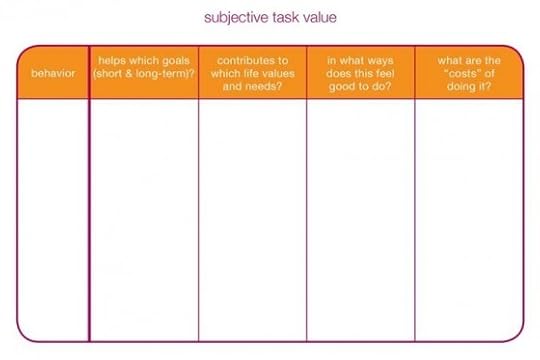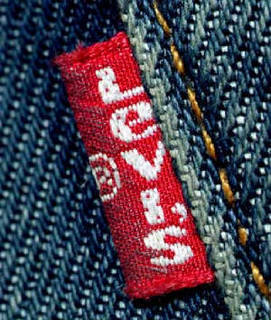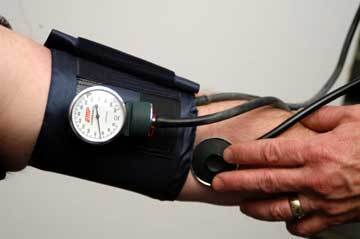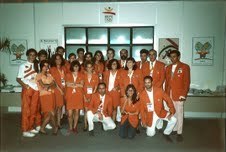Michelle Segar's Blog, page 4
March 8, 2013
Is it a good idea to tell people they will be harmed from not exericsing?
There is an interesting debate going on about whether focusing on the many negatives of physical inactivity is a good or bad idea.
In The Lancet July (2012) Chi Pang Wen and Xifeng Wu advocated that there be a large-scale effort to get more people active by “stressing harms of physical inactivity.”
A body of research has investigated whether creating messages that frame physical activity to emphasize what is gained is better or worse than messages emphasizing what can be lost by not moving. In fact, a recent meta-analysis of the research on this showed that “gain-framed” messages for physical activity are more persuasive than “loss-framed” ones.
Amy Latimar, a research leader who I greatly admire, co-authored a response to the July Lancet piece emphasizing that focusing on the harm of being inactive flies in the face of what science has shown. Their response is here.
In addition to the gain vs. loss framed literature, research on self-determination theory would suggest that contexts that support our need to feel autonomous, competent, and related would better foster the high-quality motivation necessary to maintain physical activity over time. (If you want to learn more, I recently wrote a three-part series on this issue here.)
From a sustainable behavior and human flourishing perspective, helping individuals link being physically active to the what they most care about achieving everyday would have better results than communicating about what they will lose if they remain inactive. Why? Because people have to feel deeply investigated about something in order to keep it up in today’s hectic life.
Others might argue that we should stop talking about this issue and that people should just “step up to the plate” and take responsibility for their behavior, and the potentially large costs their unhealthy behavior is enacting on society. They should “just do it!”
What do you think about this question? Which way of promoting physical movement do you think we should be doing?
The post Is it a good idea to tell people they will be harmed from not exericsing? appeared first on .
February 16, 2013
Part 3: The Secret Life of Motivation – Are You Fueled to Succeed?
Last week, in the second of this three-part series, I explained how having internal sources of fuel, or drive for self-care behaviors (e.g. more exercise and sleep) helps individuals take ownership of their daily choices and behavior. If you’d like to read this three-part blog series in order, the links are: Part I, Part II.
This week’s post describes some of the concrete ways individuals, practitioners, and organizations can convert external fuel (“extrinsic motivation”) into an internal, renewable energy source that continuously drives health-related behaviors and self-care (“intrinsic motivation”).
A Necessary Conversion: From Important to Essential
Converting an external source of fuel into an internal one is necessary if you want lasting behavior. This conversion transforms a dreaded chore into an authentic and meaningful behavior. Thus, our drive for this behavior has to become fueled by an inner integrity that will be supported by our core purpose and values.
This takes a behavior from being “important” to being “essential” to fit into our busy lives.
So, how can individuals, practitioners and organizations help people shift externally fueled behaviors into an internalized and renewable source of energy? I describe strategies below by each group. Feel free to skip the sections that don’t interest you and go right to one that does.
Individuals: Make the Behavior Your Ally
Mid May, I will be in Lincoln, Nebraska delivering a keynote to the public about how to make physical activity an ally and use it to “Move Toward Happiness.” If you live in the area I hope you can attend. But, if you don’t, below are some key strategies that you can use in your own life.
Assess whether, in general, your motive for adopting this new behavior feels like something you are trying to force into your life or as a specific strategy that can help improve your life in very real ways.
If your purpose for doing this behavior feels external and forced it is important for you to recognize. Decide whether you want to convert this behavior into a trusted ally that will enhance your daily life.
To create an internal source of fuel it’s important that you start to perceive this behavior as a reliable ally. You should acknowledge that it will help you take better care of yourself and foster the kind of life you want to live.
Consider very specific ways you might benefit each day by choosing this behavior.
Toss out “gold standards” for this behavior and create realistic goals. Plan it into your day like any other important activity. This will create space for the behavior and also serve as a reminder when life gets busy.
Start tracking how your daily well-being and success benefit from this behavior.
Acknowledge that this is a learning process, and not something you can just “turn on.” We let our kids take time to learn important skills, like math or swimming. How about giving ourselves the same opportunity?
If you’d like to read a previous post I wrote about making this behavior an “ally,” check out this post.
Behavioral and medical practitioners: From a Chore to a Gift
April 25, 2013, I am training University of Michigan Hospital System’s physical and occupational therapists the steps to transform a health behavior from a “chore” (“extrinsic motivation”) into a “gift” (“intrinsic motivation”) with patients. For those who can’t attend this training below are some key strategies that anyone can use with their patients.
Understand that the way your patients and clients perceive and approach any behavior change is simply the way they’ve been taught. This includes how we’ve been taught to change our behavior (“exercise 30 minutes 5 days/week,” “eat 9 fruits and vegetables/day,” etc.), and also the purpose for which we’ve been told to change our behavior (“reduce cholesterol,” “lose weight,” etc.)
Ask your patients directly about what they’ve learned regarding the behavior under consideration and where they learned it. Their answers are their mental model for the behavior. At this juncture, help them identify if their model is accurate. (For interesting reading on how people construct their lives through mental models, see Michael Bergeisen’s interview with Srikumar Rao’s here).
Help them identify “black and white” thinking and “gold standards” that demand perfection. However, to do this you must become aware of your unrealistic beliefs that get passed on to the people you are coaching.
Have them list and assess the reasons they think they should make this change to help them assess whether they have an “external” or “internal” source of fuel.
Start fresh! Help them create reasons for change that THEY care deeply about.
One week is a good time period for experimenting and assessing. Help them identify if these new internal reasons for behaviors enhance their daily life. This should be done weekly for a period of time. (Remember, it’s a learning process.)
Talk explicitly about how the “gifts” from doing this behavior can continue as long as they keep doing it. One subtle but important perk to ask them to notice is the feeling of pride from making choices that favor self-care over immediate gratification. (Also, ask them to notice how they feel when they don’t do it. This helps them really understand the relevant ways in which this behavior is an ally to their daily life.)
When we help patients shift their mindset for self-care behaviors from “chores” to “gifts,” it changes the emotional charge they feel toward that behavior. (How people feel about the behavior is an unconscious source of motivation so their feelings about the behavior matter a great deal.)
Organizations: Bypass Health to Thrive
At my keynote for the National Business Group on Heath’s Leadership Summit on Workforce Well-being in Washington DC on May 23, 2013 I will be discussing how organizations can achieve improved outcomes by replacing “health” promotion with “thriving” promotion. If you are not a member or can’t be there, below are some key strategies for use by organizations.
Assess the specific benefits your organization has been promoting to end users (for participation, membership, and/or enrollment in programs).
Evaluate the effectiveness of these rewards to engage your target population and motivate ongoing behavior. Hint: Are you fostering internal or externally sourced fuel? Are the benefits from these behaviors compelling to your busy target audience?
The next steps depend on whether your organization, or an outside vendor, is providing your wellness/health communications strategy and programming.
If a vendor, ask them how their strategies are fostering internally sourced fuel among your end users.
If you are in charge of your organization’s initiative, talk to the employees/end users about what they care MOST about every day. Develop new messages and program strategies to link self-care behaviors with these outcomes. (We health promoters are extremely fortunate that the “health” behaviors we want to promote actually do double duty and are also levers for thriving.)
It’s time for health promoters to stop promoting health. Why? Health is competing with too many other, much more, compelling goals to win.
It’s time to get creative and have fun doing it. Think energy. Think strength. Think humor. But please, please please stop talking about these powerful self-care behaviors as if they are bitter pills to take! This is marketing 101, folks.
Don’t forget to set up ways to evaluate whether and/or how these creative changes are influencing people’s lives and the behavioral outcomes you seek. Consider this a path that doesn’t end, and keep innovating and learning as you go.
What are your thoughts and experiences with transforming an externally driven behavior (“extrinsic motivation”) into an internal one (“intrinsic motivation”)? Please share with me in the comments section below.
Moving Toward Happiness: One Step a Time,
Michelle
Find these ideas interesting or useful? If so, please share this post with your friends, family, colleagues, and/or health care professionals through the social media and email icons below.
The post Part 3: The Secret Life of Motivation – Are You Fueled to Succeed? appeared first on .
February 6, 2013
Part 2: The Secret Life of Motivation – Are You Fueled to Succeed?
Last week, in the first in this three-part series, I explained how having external sources of fuel, or drive, to make behavioral changes is costly for individuals, practitioners, patients, and organizations. If you’d like to read these posts in order, start with Part 1.
This second post will discuss a much better alternative and how we can all achieve it.
In contrast to being externally fueled, when we are internally fueled toward change and goals, it’s OUR fuel. We own it. We generate it.
Let’s briefly return to the analogy of a car I used in the last post. When the origin of our fuel resides inside us it is also renewable! We don’t have to fear running out of “gas” or spend time seeking out stations to refuel and reenergize ourselves.
The framework that has most informed our understanding about the superiority of having an internal source of fuel for sustainable behavior is called “self-determination theory.”
We Need the Right Kind of Fuel
There has been an abundance of research using self-determination theory across many different types of behaviors, including:
losing weight
adhering to medications
controlling glucose
smoking cessation
exercise
academic success
among many others
Drive, an interesting book by bestselling author Dan Pink, reviews some of this research and persuasively reports studies showing that intrinsic “drive” (or fuel) trumps extrinsic in a whole host of areas.
This research consistently shows that when we are internally-fueled (self-determined) we are more likely to persist toward our goals in the face of challenges. Because of that stronger drive, we are more likely to sustain our target behaviors over time.
Initiating change out of a sense of ownership injects that behavior with authenticity and positive feelings. This transforms what was once a mundane chore into a behavior symbolizing purpose and meaning.
So, how can individuals, practitioners, and organizations better understand this essential conversion?
For Individuals (you, me):
When our behavior aligns with our personal life values it creates a positive feeling toward the behavior. Whether we feel positively or negatively about a new behavior determines whether we “want” it or “dread” it. Because this occurs outside of our awareness, our feelings about the behavior we are working to adopt matter a great deal.
For Practitioners: (treating physicians, NPs, personal trainers, or coaches):
Help your patients and clients understand that health-related behaviors are vehicles of:
daily happiness
energy
success
This makes them relevant, and thus, compelling to fit into busy lives. When people become aware of these other purposes for self-care behavior, their source of fuel becomes internalized. This results in the highest quality fuel.
Working with your clients to identify the specific ways any given behavior can improve their daily quality of life, and noticing those benefits in real time, sets both of you up for success. See my earlier post discussing new research on potential differences between men and women on this question.
Organizations experience exponential benefits when they create contexts which support self-determined sources of fuel.
Organizations influence whether employees develop external or internal sources of fuel. This is especially true in health promotion communications and initiatives. How organizations promote health to employees creates the foundation for either short-term or long-term behavior. Because internal sources of fuel are renewable, they are the real driver of sustainable behavior. Sustainability is the “Holy Grail” because it is necessary to prevent and manage expensive chronic conditions.
Given this, organizations need to recognize whether or not they are fostering internal or external fuel. But there’s even more benefits to organizations! Research shows other benefits to having an internal source of fuel, such as enhanced psychological well-being. This positivity from internally sourced fuel is in stark contrast to the negative effects from externally fueled sources such as anxiety, shame, guilt, poor performance, and even decreased immune function.
Next week, in Part 3 of this series, I’ll offer specific ways that individuals, professionals, and organizations can create internal sources of fuel. I hope you’ll stay tuned.
What are your thoughts and experiences with this? Please share with me in the comments section below.
New featured interviews with me about these and related ideas can been read in Prevention Magazine’s “Healthiest Year Ever” by Virginia Sole-Smith.
Find these ideas interesting or useful? If so, please share this post with your friends, family, colleagues, and/or health care professionals through the social media and email icons below.
The post Part 2: The Secret Life of Motivation – Are You Fueled to Succeed? appeared first on .
January 30, 2013
Part 1: The Secret Life of Motivation: Are You Fueled to Succeed?
We call it “motivation.” But what does this concept really mean and how does it actually help us maintain our drive to achieve our goals every day?
In today’s post, Part 1 in my 3-part series on motivation, I address the “best” and “worst” types of motivation, as well as how this knowledge can be leveraged to help YOU achieve sustainable health-related and self-caring behaviors (more movement, sleep, or better eating). This discussion applies to individuals, practitioners and organizations, as you will learn below.
While I use it in my work, I’ve come to believe that the term “motivation” is unhelpful for most individuals.
Motivation refers to the drive and desire we feel to pursue our goals and values. While “motivation” is tossed around by everyone under the sun, this term doesn’t really get at its core meaning and the crucial role it plays in our long-term success, health, and well-being.
I believe that a more helpful way to think and talk about “motivation” is that it is the fuel we all need to persist toward our goals. No fuel = no energy to pursue what is most important to us.
We All Need Fuel
Think about automobiles. Without gas or another type of energy, our car won’t go – whether it’s a Ford or Porsche, right? If we are not energized to persevere toward our goals, then we won’t be able to realize what is most important to our lives. It’s that simple.
For most people, the common thinking is that it makes no difference if our energy source is external or internal. However, research clearly shows that whether our fuel for our goals is sourced externally or internally has tremendous implications for our success in achieving them.
Does it take a clinician’s admonition or Nutrisystem®’s new “Fresh Start” advertising to spark your energy for making a change or initiating a new goal? If so, you can consider yourself as having an external source of fuel.
While external fuel sources effectively get us to initiate behaviors (like trying to move more, improve our parenting, etc.), being externally fueled is not optimal for sticking with behaviors over time.
If our drive for self-care depends on other people or events, we are dependent upon a “foreign” source of fuel, not dissimilar to needing to find a gas station if we are to keep our car moving.
Not only is externally-fueled energy less likely to lead to success, it actually is very costly for everyone: individuals, practitioners, patients, and organizations.
For Individuals (you, me):
If we seek external sources of fuel to “motivate” ourselves, then we are investing our precious energy and inspiration pursuing something that is likely to lead to disappointment. When we invest our energy and money in approaches that are less effective over time, then we are not investing in the most strategic way. This has an exponentially negative effect. Not only do we fail to achieve the long-term results we want, but additionally, we wind up being deflated and having our core intentions to live as well as we can, undermined.
For Practitioners: (whether treating physicians, NPs, personal trainers, or coaches):
Prescribing and advocating that your patients/clients adopt healthier lifestyles in order to achieve clinical “gold standards” (e.g., in blood pressure, cholesterol, or weight) sets the entire behavioral process up on something that is, to a great extent, irrelevant to their daily pressures and roles. Once patients are out of the “context” offering external fuel (i.e., your office) their tank quickly gets to empty – setting both you and your patient up to fail. This joint failure kills their desire and energy to change, possibly even influencing future decisions to not seek care, leaving you feeling frustrated and ineffective.
But the cost of externally fueling is also expensive for organizations. Incentivizing employees to take a “HRA” or sign up for a lifestyle change program with financial rewards (e.g., an externally-sourced fuel) is currently all the rage in the health promotion industry. While there is research showing that incentives work to get some of the population to “get started” there is little evidence that these participants sustain lifestyle changes over time. Without sustainable behavior, optimal health care savings and performance benefits cannot be achieved. Thus, offering incentives without having a specific plan in place to help employees convert this external source of fuel into an internal one is a short sighted and expensive strategy.
So, what’s a better alternative and how can we all achieve it? I hope you’ll stay tuned for part 2 of this conversation next week.
I’d love your thoughts and experiences with using externally-sourced fuel for change – share with me in the comments below.
New featured interviews with me about these and related ideas can been read in Good Housekeeping and EverydayHEALTH.com.
Find these ideas interesting or useful? If so, please feel free to share this post with your friends, family, colleagues, and/or health care professionals through the social media and email icons below.
The post Part 1: The Secret Life of Motivation: Are You Fueled to Succeed? appeared first on .
January 2, 2013
Six Powerful Tips to Really Keep Those New Year’s Resolutions
Happy New Year!
Over the last few months, I’ve had the privilege of speaking with numerous journalists about how to help people create New Year’s resolutions that they can stick with in 2013.
Featured media in the last week include The New York Times Magazine (January 6), CNN.com, Stateside (NPR-MI Radio), and Fox 2 News Morning Show.
Below, I share six powerful tips for you to use personally or in the behavioral counseling that you do.
1. Focus on only one resolution.
The term “New Year’s resolutions” is plural and implies that we should make more than one resolution at the beginning of every New Year. In fact, making more than one resolution, in general, is not a good idea. Small changes are almost always better than large ones. We have a limited capacity for willpower – on our best days! Yet most of us live busy lives where we have to make numerous decisions (which saps willpower) on multiple fronts. Given this, we are much more likely to stick with our resolution if we only work on learning one new behavior at a time. If you made more than one resolution for 2013, consider picking the most important one to focus on now.
2. Don’t make a resolution about anything “important.”
Our lives are too scheduled and hectic to fit in things that are “important.” Let’s be real. Most of us only have time for what is “essential” to function every day. Instead of making abstract resolutions related to improving your health or losing those same 40 pounds this year, refocus on a resolution that can improve an area of your daily life in very real and specific ways. Think increased energy, better mood, less stress, etc. Then, identify one (only one) behavior you can work on to give you more of those precious outcomes, like getting more sleep or moving your body more during the day.
3. Find YOUR hook.
We stick with behaviors that we have positive feelings about, ones that feel like gifts to ourselves. Once you identify which behavior you want to adopt, it is critical that you receive positive feedback that your efforts are delivering results. So, start charting how your days go when you do this behavior and how they go when you don’t. Start to notice whether you feel more positively AND if this increase in positivity further helps you better enjoy and be more successful at what matters most. Once you see the compelling link between practicing this new behavior and how much it helps you thrive in your daily life, it will begin to feel like a gift you can give yourself. When you discover that this new behavior helps you thrive that is the hook to lasting motivation.
4. Reframe your resolution as an opportunity to “learn” – not to achieve.
We live in a culture that pressures us to be perfect. But thinking about your resolution as trying to hit a bull’s-eye does not set you up for long-term success. Research shows that people who have “achievement” goals, goals that aim to achieve a specific outcome, are less likely to stick with their efforts compared to those who frame their goals as ways to “learn.” So, give yourself permission to take time to learn how to sustain this new behavior. You have the rest of your life to do it, why not take six months to a year to learn how to stick with it for good?
5. Plan for failure.
That might seem like a pessimistic way to begin the New Year. But in fact, planning for the challenges ahead is more realistic and can help you more strategically achieve your goals. When anything is important to our daily lives (school, professional travel plans, meals, etc.) we accommodate unanticipated challenges and necessary schedule changes, automatically. Why don’t we consider and treat our goals to “feel as good as possible” in this way? For those who’d like to start doing this, the technique is simple, it’s called “if-then” planning. After you forecast your weekly plans for your new “thriving” behavior, think through what is likely to get in your way. Then write down what the situation(s) is that will challenge your plans (the “if”) and what your action or response will be to overcome that challenge(s) (the “then”). This technique not only helps you better confront your challenges, it also makes your strategies “automatic.” Having our intended habits become automatic reduces our need for willpower, and thus, conserves this limited resource for future tough situations! This technique is really key to feel and live as well as we can.
6. Be self-compassionate when things go awry.
Remember when Forrest Gump was running (in the movie) and he said something along the lines of, “S___ happens!?” The wisdom of “stuff happens!” cannot be over emphasized when it comes to sticking with your New Year’s resolution. Regardless of our plans, things will always go awry. Research shows that being self critical when we don’t achieve our plans or goals actually undermines our motivation and the likelihood of success. So, when things go awry with your plans, a smarter strategy is to notice what happened with self-compassion and without any negative judgments. Remember, your New Year’s resolution is actually one giant experiment, so everything that goes wrong actually becomes an opportunity to learn and inform the next time around.
As we enter 2013, I want to thank you for your continued interest in reading my ideas about creating sustainable motivation, behavior and self-care. If you have any triumphs or challenges to share about your own resolutions, specific challenges with patients or clients, or just behavior change in general, please leave a comment/question below – I look forward to personally responding to every comment.
I have updated my website to make it more helpful for folks to understand how to build lasting motivation and behavior personally or in their professional work fostering health and well-being in others.
So, please check out my new “Motivation Innovation” page if you’d like to see a summary of my solutions. The content is organized in a user-friendly way by professional and personal interests.
I’d love to hear about your New Year’s resolution challenges and/or successes below..
The post Six Powerful Tips to Really Keep Those New Year’s Resolutions appeared first on .
September 24, 2012
Sticking With Exercise All Year
With the onset of Fall it is time to strategize how to stay physically active beyond the summer season, when life and our obligations often increase.
If you care about sticking with a physically active lifestyle throughout the year, here are five essential steps to help you:
Step 1 Become very clear about how moving your body helps the most important things in your life. Also, think through the specific goals with which exercise might interfere. Being aware of the benefits and costs of exercise is very important.
Step 2 Preview all potential changes in your schedule for the upcoming season and consider how your new schedule might impact your ability to stick with your program and goals.
Step 3 Determine a few alternates to build in flexibility.
Step 4 Preview the challenges that you are most likely to face, and take a minute to literally imagine the specific strategies that might prevent and overcome those specific situations. (Science shows this type of “if-then” planning ahead of time really works.)
Step 5 Create a formal “check in” with yourself in your calendar to evaluate how your Fall plan is going and modify as needed. (It can’t hurt to evaluate every 2-4 weeks until you get this season’s activity goals down.)
My friend Kris values how much better she feels when she is regularly active but juggling a full time professorship with three little kids stretches her time thin.
What’s her strategy for Fall? She’s learned that she has to fit fitness in first thing in the morning or it doesn’t happen. Placing her treadmill in front of the TV lets her use movement to achieve another important goal: staying current with the news for her classes. She puts the speed at a pace that feels good to do rather than choose a faster one she’ll dread waking up to. Kris will have to check in a few weeks after the semester starts to determine if her plan is interfering too much with sleep and whether she needs to create a different strategy to keep moving. She also knows this is a learning process and not about hitting the mark every time.
Feel free to use the chart below to think through these questions for yourself. It is based on the “Subjective Task Value” concept in an excellent motivation framework developed by Jacque Eccles and colleagues. The point of this exercise is to have you become mindful about the value and costs of physical activity so you are prepared to combat the challenges that come your way.
I hope these steps help ease your transition from summer to fall.
Moving Toward Happiness – one step at time,
Michelle
The post Sticking With Exercise All Year appeared first on .
August 20, 2012
Why Are Levi’s Jeans Relevant to Promoting Exercise?
In an article about brand meaning in the Journal of Business Research, the authors emphasize how crucial it is that brands stay relevant when the marketplace is as dynamic as ours.
They used Levi jeans as an example.
To baby boomers, Levi’s meant freedom and rebelliousness. To their kids, wearing Levi’s was for old people.
Levi’s did what anyone who wants to be relevant does – they rebranded to become compelling to buy in the current hip jean market.
Physical movement is a behavior – not a piece of clothing.
But if we (advocates of exercise and healthy living) want to make physical activity RELEVANT enough within busy modern life so that people find it compelling to fit in – we better rethink our passé medical branding of movement.
We need to rebrand physical activity from being just “important” to something that we can’t live without.
The post Why Are Levi’s Jeans Relevant to Promoting Exercise? appeared first on .
August 13, 2012
Why Health Promoters Should Stop Promoting Health: an ironic strategy to improve health
Last week, I was walking with my mother, a self-proclaimed “worried well,” expressing my concerns with “health” being the reason for promoting “heath-related” behaviors. She reminded me that, for her, health and preventing disease are the greatest motives for her daily walks. Then I reminded her that she didn’t start regularly walking until she retired and had a lot more time to fit it fitness. She agreed. Therein is the problem.
If you are a clinician, CEO, heath game developer, health and wellness service provider, coach, or HR and wellness representative, these ideas are relevant for you.
In the midst of this health-care-cost tsunami with more treacherous waves approaching, the suggestion to stop promoting health might seem heretical. Yet, there are research-based reasons why “health” may be the wrong goal to promote if improved employee health, and the resulting productivity and cost savings benefits it brings, is the desired outcome. This post presents three primary reasons that targeting “health” as the reason, or “hook,” to promote lifestyle changes is inherently flawed and undermines the foundation for lasting motivation and behavior change.
Health promotion is an interesting intersection of medical and business goals. The general aim of health promotion is to foster “healthy” lifestyles among individuals as a means to reduce health care costs and improve health biomarkers and outcomes in businesses such as increased productivity and reduced absenteeism, which equate to an improved bottom line and more satisfied employees. Is this model a valid model?
The data showing that healthy individuals are cheaper than ill ones is up for debate. There is some evidence showing that organizational investments in health promotion yield savings but many question the quality of methods used in this research. In addition, the debate about whether extrinsic incentives undermine motivation or not is still underway.
Unfortunately, concluding that health promotion investments do not yield savings for organizations is based on making a decision about solutions, many if not most of which, have been primarily based on incorrect assumptions about human decision making and motivation. It is crucial to critically evaluate health promotion evaluation data, but it’s also important to deeply understand what is actually being evaluated. Imagine believing that cars can’t get high gas mileage because the dominant technology currently available and used in the auto industry doesn’t achieve this aim. Similar to the strides in technology for much better gas mileage, there have been huge strides in the science of human decision making. Yet these new insights, for the most part, have not been incorporated into the health promotion and wellness solutions available in the marketplace. Thus, the conclusion that promoting healthy lifestyles will not help organizations save money or get an ROI is based on research that embeds an important assumption: the health promotion solutions that have been researched are actually the best ones to foster the level of engagement and long-term participation necessary to achieve optimal productivity, health-related and cost savings outcomes. If these solutions have not been designed to leverage the unconscious, automatic goal pursuit, and other important aspects of daily decision making then our conclusions about the value of health promotion are based on outdated solutions, and not what might actually be feasible and possible to achieve.
But I digress.
Getting back to my main discussion, the assumption that promoting “health” as the reason or goal for doing self-care behaviors (e.g., eating more fruits and vegetables, moving more, stress reduction) is optimal for engaging individuals in their own health-related outcomes, especially fostering long-term behavioral sustainability has no basis in science – it’s simply convention.
Consider this, does it actually matter that lifestyles behaviors result in better health when it comes down to how to effectively market healthy choices? No. Health outcomes from lifestyle behaviors are irrelevant when we consider which outcomes will most effectively foster behavior and choices that people will stay motivated to prioritize in their busy daily lives.
Health Promoters Goals Are Irrelevant to What Is Most Motivating to People: Marketing 101 Revisited
The logic behind promoting healthy living is easy to understand: “If individuals make healthier choices, save is saved money, so let’s promote healthy living to people.” The problem is that logic doesn’t motivate. Emotions do.
Most successful business (think Apple) do not develop marketing campaigns that explicitly promote their goals (i.e., profit). Instead, they conduct thorough market research and use their target customers’ needs, wants and worries as the hooks in their marketing campaigns. Successful businesses brand products and services in strategic ways so that customers to try them and then continue to buy them. Business that are successful don’t want one time buyers, they want repeat customers.
For the most part, there has not been using a ‘repeat customer’ mentality when it comes to promoting lifestyle changes within organizations, health care or even society in general. Health promotion programs, services and marketing tend to feature desired ends that organizations hope for instead of the core values and goals their end users have. This is a strategic error that has expensive consequences for both organizations and employees.
In order to achieve better health, decreased health care costs, folks have to sustain the lifestyle behaviors that they start. Yet, as most readers know, the majority of people who try to change health-related behaviors do not maintain them – they drop out soon after starting.
Health is an Abstract Value and Not Compelling to Prioritize
University of Michigan research published Fall, 2011, showed that there is a gap between what people say they value and what they actually do. Working women reported highly valuing ‘good health’ and ‘aging well’ goals for exercising among their other top life goals. Yet goals related to improving daily quality of life through exercise trumped health-related goals when it came to their participation over one year.
What is going on? Modern society is a challenging place to promote healthy living! Today, people are continuously on the run, chauffeuring their kids places, getting to work on time, and tweeting their friends. In other words life is very very busy.
Most asked will say they want to be healthy and affirm that doing healthy things is important. We all want good health. But how essential is ‘health,’ really, compared to all of the top priorities and goals against which health-related behavior constantly competes for time?
The reality is that we not have time for important things. There is only time to fit in activities that are essential to our daily functioning and well-being.
Behavioral economics research shows that individuals have a present focus bias, meaning that they choose things that will reward them NOW over selecting benefits in the future. Larger distant rewards are not as motivating (e.g., “better health”) as smaller rewards that can be immediately experienced. Think “increased energy.”
Health is Not Actually the Goal. It’s a Proxy.
While a controversial thing to suggest: health isn’t really the goal we want. If you think about it, health is valuable only because it helps us live our daily lives.
Health is only the façade of the building. It’s what’s inside that we really really want. Health is valuable because without it we lack energy, and lack of vitality challenges our happiness, sense of well-being, and ability to achieve the daily roles and responsibilities that make life meaningful. Thus, health is really just a proxy for the experiences we desire and that make our life fun to live.
Research on goal striving and behavioral self-regulation (e.g., how we manage and negotiate behavior in our lives) clearly shows that if people are to continue to strive towards the goals they initiate then they need feedback that they are approximating their goals. Without evidence that they are making progress, they stop. Consider that, with “health” or “disease prevention” goals, heck even weight loss goals, people often don’t get regular or noticeable feedback when they are achieving these goals.
In contrast, when self-care goals target ‘feeling good’ or having ‘energy’ as the purpose, people get feedback, immediately, whenever they check in with themselves.
Simple Solution based on Science: Rebrand Health as Well-being.
Health and self-care behaviors have been, unfortunately, branded as ‘medicine’ and in very clinical and uninspiring ways. Instead of branding “health,” or self-care behaviors in the realm of medicine, for the purposes of engagement, motivation, and priorities, it would more strategic to rebrand them as direct vehicles to well-being. The reality is that that most of same behaviors that improve health (get more sleep, make better eating choices, move more) also lead to experiences that are compelling to experience in our daily lives, such as having more energy, a lifted mood, and less stress.
We just have to look toward Big Pharma to know that marketing outcomes like ‘happiness’ and ‘quality time with family’ from their behavior of interest, taking their drug, is a good idea. They’ve been doing it for years. Even Oprah understands the value of this idea. She changed the name of her magazine’s column from “health” to “feeling good” in late 2010. An article in the Wall Street Journal May 2012 reported that having “focus on quality of life helps medical providers see the big picture—and makes for healthier, happier patients.” This article primary talked about patients with a chronic illness. That those who have lost their ‘health’ and thus should be the most compelled to re-encounter it, are more motivated by feeling good than health suggests that health might be becoming a passé motivator of healthy living and disease management.
Translating Research into Real Life
Before 2006, I would have been one of the strongest advocates of “health” being a great reason to exercise and practice other self-care behaviors. In fact, I hypothesized that “health” as the primary reason to exercise would be optimal for motivation and participation in a longitudinal study. I couldn’t have been more wrong. Participants who exercised for “better health” had as poor motivational profiles and did as little exercise as the participants who exercised to lose weight. (We expected poor outcomes from those having weight loss goals for excise.)
I was left with the task of trying to understand and study other science that could help explain why ‘health’ wasn’t such a great reason to exercise (for women who worked full time anyway). Unclear findings are challenges that drive the investigator beyond their comfort zone of knowledge base and assumptions until they get glimmers of insights about counter findings.
Struggling to understand the fruits of unexpected findings is one of the most important ways science advances.
While there’s more to share about this, I’ll end the post here.
I leave you with this question: For you, what makes it to the top of your daily “to dos” – are they important things you value or essential things you can’t function well without?
I am open to all comments, including ones that challenge these ideas.
The post Why Health Promoters Should Stop Promoting Health: an ironic strategy to improve health appeared first on .
July 18, 2012
Carrying An Olympic Torch in 1992…and twenty years later
Who is that kid in the authentic “torch carrying” garb?
I can’t believe it, but it’s me.
Anyone who has followed my posts or knows me is aware that athlete I am NOT!
I am not much of a sports fan either – despite being passionate about fostering physical movement and healthy living.
So, how is it that someone like me has the privilege of saying that twenty years ago I carried the Olympic torch?
As I recall this opportunity, it seems incredulous to me, especially the larger impact it had on the rest of my life.
When I was in my mid twenties, I was unclear of my career path (I had been waiting tables and doing sales in Chicago at that time). While traveling to Barcelona on vacation, I had an opportunity for an interview with the Olympic Committee.
I got the job and immediately moved to Barcelona to help prepare for this historic event.
It was a blast but very hard work. My boss was a nut job (an “enchufe” – which means she was plugged into the job basically through nepotism), her secretary wanted to kill me (that is a very long but now funny story).
The Catalan folks putting on the Olympics (from Barcelona) hated the folks I worked for, media folks in charge of the “Radio Televisio Olympiada-RTO” (mainly from Madrid) and made working at the Committee a TRIP.
As a “neutral” American who was fluent in Spanish but could also limp along in Catalan, I was frequently asked to take work requests from our “RTO” media group to the Catalan group so they would be fulfilled instead of filed.
I became close and personal with the long history of competition/mistreatment/hatred between these two regions of Spain. (Under Franco’s harsh regime speaking Catalan was even outlawed as one of many ways to suppress the Catalan people.)
At the huge party the night before the Olympic Games started, I remember seeing OJ Simpson with Nicole. Very strange to recall that evening given what happened.
Despite all of the drama, I further fell in love with Spain, and became a huge fan of the Catalan people for their industriousness and frank natures (and amazing food!). It was an INCREDIBLE honor to be involved and I developed some wonderful friendships.
But let me get back to carrying the Olympic torch…
When I heard that the Committee were having a contest to select employees, via essay applications, among their employees to be a torch carrier I was determined to do it.
Because the decision makers were Catalan I wrote my application in the best Catalan I could muster – and I actually made the cut!
My section to run with the torch was the Penedes region of Spain, just below Barcelona.
The outfit in these photos is the official garb – down to the socks and shoes – given to the torch carriers to wear. (I still have my formal uniform for the Games, an orange skirt outfit that women in my division wore in the photo below.)
My orange uniform is currently hanging in my office at the Sport, Health, and Activity Research and Policy Center for Women and Girls at the University of Michigan (UM) (a strategic partnership between the UM and the Women’s Sports Foundation.) Some have suggested I auction it on EBAY but I don’t think I could part with it.
I recall how heavy that extremely light torch became the further I carried it- working to hold it majestically: high, straight up, and in front of me.
The last half of my assigned kilometer, the torch kept tipping down and I had to muster all of my strength to raise it up again. (Remember, I’m no athlete – Not even close.)
But the momentousness of this event enabled me to complete my mission, and shout along the way “Visc Catalunya!” (Live Catalunya!) to the roaring crowd of Penedes citizens proudly lining their streets.
I haven’t thought about this amazing honor for over a decade or two, until now, as the world gears up for the 2012 games and conversations are spinning around me.
As I reflect upon carrying the flame that would eventually light the fire, igniting the 1992 Olympic Games, something amazing dawns on me: I am carrying another significant torch today, twenty years later.
Participating in the 1992 Olympics did not light my fire for sports.
It did, however, light a different kind of flame for me – Participating in this glorious global event influenced my thinking about the power of movement, having deeply meaningful personal goals, and striving to live life to the fullest.
Contributing to the success of the 1992 Olympics sparked a desire deep inside of me to work toward understanding and facilitating empowerment and self-realization through living well.
The Torch I carry today aims to ignite a deep and authentic desire for meaningful, healthy living through research and also training professionals how to foster better decision making and lasting motivation among their employees, patients, and clients.
Now, as I consider the upcoming games I ponder: What can we (regular folks who are not elite athletes – and professionals who work with us) take away from the upcoming 2012 Olympic Games that is valuable and relevant for us?
I believe can learn from the focus and dedication that elite athletes bring to this competition.
By realizing that the choices we make every day actually determine what we bring to and what we get out of our own lives we discover an inspiring mission that is far less extreme but no less important than winning at the Olympics: Deciding to fuel our own energy through strategic daily choices so that we may leverage and live OUR lives to the fullest.
The photo below is a recent photo my friend Roser sent me of folks we worked with during the Olympics.
The post Carrying An Olympic Torch in 1992…and twenty years later appeared first on .
Michelle Segar's Blog
- Michelle Segar's profile
- 37 followers












